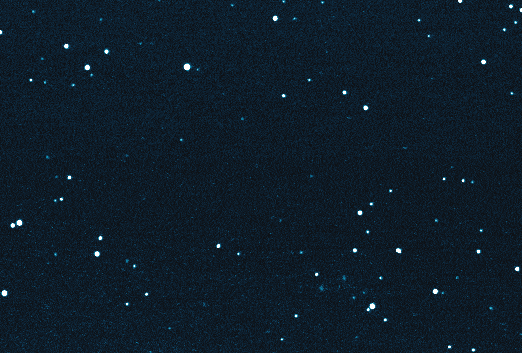Asteroids & Comets
Message boards :
Science (non-SETI) :
Asteroids & Comets
Message board moderation
Previous · 1 . . . 19 · 20 · 21 · 22 · 23 · 24 · 25 . . . 28 · Next
| Author | Message |
|---|---|
 Bob DeWoody Bob DeWoody Send message Joined: 9 May 10 Posts: 3387 Credit: 4,182,900 RAC: 10 
|
A gigantic asteroid which is larger than the world's tallest building, the Burj Khalifa, will hurtle past our planet in around two weeks time. Depending on what one reads as to whether the space shuttle qualifies as an aircraft as well as a spacecraft it flew through the air considerably faster than the X-15. Bob DeWoody My motto: Never do today what you can put off until tomorrow as it may not be required. This no longer applies in light of current events. |
 tullio tullio Send message Joined: 9 Apr 04 Posts: 8797 Credit: 2,930,782 RAC: 1 
|
Asteroid 2002 AJ129 will pass at 4.2 million km from the Earth on February 4. It is rather big and very fast, but NASA says it will not be a real danger for the Earth. It has been watched during 14 years. |
 Gary Charpentier Gary Charpentier  Send message Joined: 25 Dec 00 Posts: 30650 Credit: 53,134,872 RAC: 32 
|
A gigantic asteroid which is larger than the world's tallest building, the Burj Khalifa, will hurtle past our planet in around two weeks time. Someone has dropped the word manned. Or don't those classified black projects count? |
 Lynn Lynn Send message Joined: 20 Nov 00 Posts: 14162 Credit: 79,603,650 RAC: 123 
|
Nasa will be unable to defend our planet against a doomsday asteroid that could smash into Earth in 2135, a chilling study has revealed. Researchers found that it might be impossible to stop the space rock - which is the size of the Empire State building - from careering into Earth next century. Scientists revealed that even their most advanced technology would prove 'inadequate' for deflecting such a space rock, which has been dubbed Bennu. http://www.dailymail.co.uk/sciencetech/article-5506579/Doomsday-asteroid-WIPE-life-Earth-2135.html Just a pessimistic thought , will earth be here 2135? |
|
Michael Watson Send message Joined: 7 Feb 08 Posts: 1384 Credit: 2,098,506 RAC: 5 |
Only a 1 in 2700 chance of an impact, and that over 100 years into the future. That gives us quite a bit of time to work out what to do about Bennu, in the very unlikely case that we will ever need to do anything about it. That said--Working on asteroid defense, in general, seems a very good idea. The fact that we're working on this problem already shows that we are capable of foresight in the service of self preservation. I think that bodes pretty well for our ability to deal with other threats to our continued existence. |
 Gary Charpentier Gary Charpentier  Send message Joined: 25 Dec 00 Posts: 30650 Credit: 53,134,872 RAC: 32 
|
sigh |
 tullio tullio Send message Joined: 9 Apr 04 Posts: 8797 Credit: 2,930,782 RAC: 1 
|
No problem. According to the Bulletin of the Atomic Scientists the USA has 4000 nuclear warheads. 150 of them are in Europe, Tullio |
|
moomin Send message Joined: 21 Oct 17 Posts: 6204 Credit: 38,420 RAC: 0 
|
Yes, scary indeed! As of 2016 there are some 4,000 active nuclear warheads and 10,100 total nuclear warheads in the world. https://fas.org/issues/nuclear-weapons/status-world-nuclear-forces/ |
 Lynn Lynn Send message Joined: 20 Nov 00 Posts: 14162 Credit: 79,603,650 RAC: 123 
|
If they through nuclear warheads at a asteroid it could make smaller ones. That would make things worse. Must refine the hit. |
|
Michael Watson Send message Joined: 7 Feb 08 Posts: 1384 Credit: 2,098,506 RAC: 5 |
It would probably be best to detonate the bomb some distance away from the asteroid, so as to nudge it away from an orbit that leads to Earth, rather than too close, and break it up. The ideal distance would presumably depend on the composition of the asteroid, solid iron and/or rock vs. a loosely consolidated 'rubble pile'. |
|
moomin Send message Joined: 21 Oct 17 Posts: 6204 Credit: 38,420 RAC: 0 
|
If they through nuclear warheads at a asteroid it could make smaller ones. That would make things worse. Must refine the hit.You misunderstood my post. The chance that an asteroid or a comet will hit the earth and create massive destruction is by far less than the threats of nukes. But as you say. Don't try using nukes to destruct asteriods. It will be much worse. |
 Lynn Lynn Send message Joined: 20 Nov 00 Posts: 14162 Credit: 79,603,650 RAC: 123 
|
You misunderstood my post. Nothing to do with your post moomin. :) I watched an episode on tv, and it was all about destroying asteroids. |
 Bob DeWoody Bob DeWoody Send message Joined: 9 May 10 Posts: 3387 Credit: 4,182,900 RAC: 10 
|
You misunderstood my post. All about either destroying them or diverting them. Once an asteroids trajectory is firmly determined to collide with the earth, providing there is enough warning it wouldn't take much to divert it away from a collision. As far as hitting one with nuclear devices is concerned when, say there is little warning I think it would be better to be peppered with a lot of small pieces than one big one. Bob DeWoody My motto: Never do today what you can put off until tomorrow as it may not be required. This no longer applies in light of current events. |
 JaundicedEye JaundicedEye Send message Joined: 14 Mar 12 Posts: 5375 Credit: 30,870,693 RAC: 1 
|
MISSED US BY THAT MUCH....1/2 the distance to the moon. A Tunguska class asteroid passed VERY close to Earth earlier today........here's the video observation.as 2018 GE3 passed within 120,000 miles of earth and it will be back in about 30 months....   "Sour Grapes make a bitter Whine." <(0)> |
|
Michael Watson Send message Joined: 7 Feb 08 Posts: 1384 Credit: 2,098,506 RAC: 5 |
2018 GE 3 seems to have briefly occulted the fairly bright star nearest the bottom right hand corner of the image, as it passed. Besides passing very close to Earth, the object had one of the highest relative velocities of any object tracked in the vicinity of our planet, about 29.58 kilometers per second. |
 JaundicedEye JaundicedEye Send message Joined: 14 Mar 12 Posts: 5375 Credit: 30,870,693 RAC: 1 
|
Another scary part is no one saw it coming until 24 hours prior to closest approach. This due to an eccentric orbit that runs above and below the planetary 'plane' like Pluto but inside Mercury at perihelion. At the estimated velocity and size(60-110 m) it could have been more destructive than Tunguska.  "Sour Grapes make a bitter Whine." <(0)> |
|
moomin Send message Joined: 21 Oct 17 Posts: 6204 Credit: 38,420 RAC: 0 
|
According to spaceweather.com, April 29 will see a total of five potentially hazardous asteroids making a close encounter with Earth. The space rocks, including 2013 US3, 2018 GO4, 2018 GY1, 2018 FV4, 2002 JR100, range from 45-214 meters in diameter, and will miss Earth by as little as 10.1 ld (i.e. lunar distance, the average distance from the Earth to the Moon). The asteroids will be flying by at between 5.7 and 16.7 km per second. According to NASA, the flybys will start at 10:29 am GMT, with the last flying past at 9:15 pm in the evening. Should we worry? |
 Lynn Lynn Send message Joined: 20 Nov 00 Posts: 14162 Credit: 79,603,650 RAC: 123 
|
Look at this amazing GIF. That snowy-looking scene wasn't captured on Mount Everest, or in some canyon in Antarctica. That's the view from a lander on the surface of a comet. Remember Rosetta? That comet-chasing European Space Agency (ESA) probe that deployed (and accidentally bounced) its lander Philae on the surface of Comet 67P? This GIF is made up of images Rosetta beamed back to Earth, which have been freely available online for a while. But it took Twitter user landru79 processing and assembling them into this short, looped clip to reveal the drama they contained.  |
|
moomin Send message Joined: 21 Oct 17 Posts: 6204 Credit: 38,420 RAC: 0 
|
Oh dear. It looks like our Nordic countries at winter. Dark and cold... |
|
Michael Watson Send message Joined: 7 Feb 08 Posts: 1384 Credit: 2,098,506 RAC: 5 |
That 'snow' has three sources. First, dust and ice particles from the comet itself. Second, energetic particles from the Sun, invisible to the naked eye, but easily discernible as they impinge on the camera. Third, the fixed stars, which appear to move substantially in this time lapse-video, which covers about 25 minutes. This apparent movement is due to the rotation of the comet. |

©2024 University of California
SETI@home and Astropulse are funded by grants from the National Science Foundation, NASA, and donations from SETI@home volunteers. AstroPulse is funded in part by the NSF through grant AST-0307956.